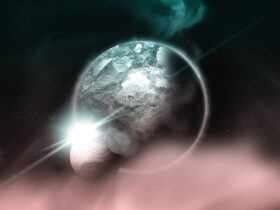NASA’s next-generation James Webb Space Telescope continues to be under the spotlight after it has presented photos of Jupiter, Neptune, and much larger celestial bodies. The telescope has now found evidence of a cluster of galaxies merging around a black hole, as Mezha reveals.
The black hole is also hosting a quasar, one that’s considered an “extremely red” one. That means that it’s very far away from Earth, which is obviously good news. Astronomers see the cosmic object as it was more than 11 billion years ago, meaning when the entire Universe was very young.
Nadia L. Zakamska, who’s an astrophysicist at Johns Hopkins University and also a co-author of the study, explained:
With previous images we thought we saw hints that the galaxy was possibly interacting with other galaxies on the path to merger because their shapes get distorted in the process and we thought we maybe saw that,
But after we got the Webb data, I was like, ‘I have no idea what we’re even looking at here, what is all this stuff!’ We spent several weeks just staring and staring at these images.
What’s actually happening is that there are at least three galaxies moving extremely fast, as revealed by the powers of Webb.
Using the powers of its infrared camera, the James Webb Space Telescope (JWST) even took a good look at Mars, the place where Elon Musk and the gang hope to move in the near future. It was the first time in history that James Webb was used to imaging the Red Planet.
The James Webb Space Telescope is equipped with advanced technological instruments that it can use for looking deeper into the Universe and galaxies than any other telescope has ever done so far.













Leave a Reply